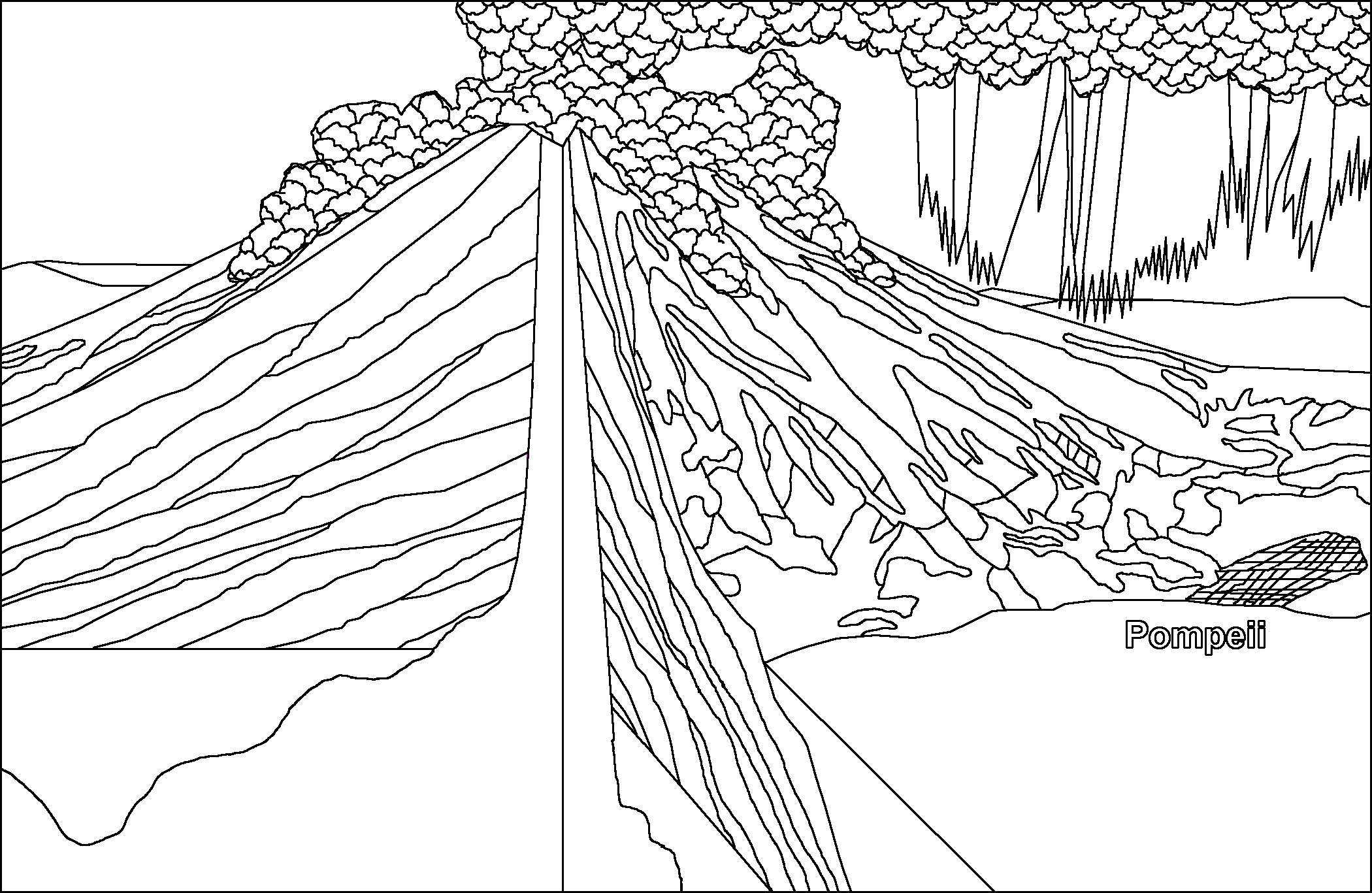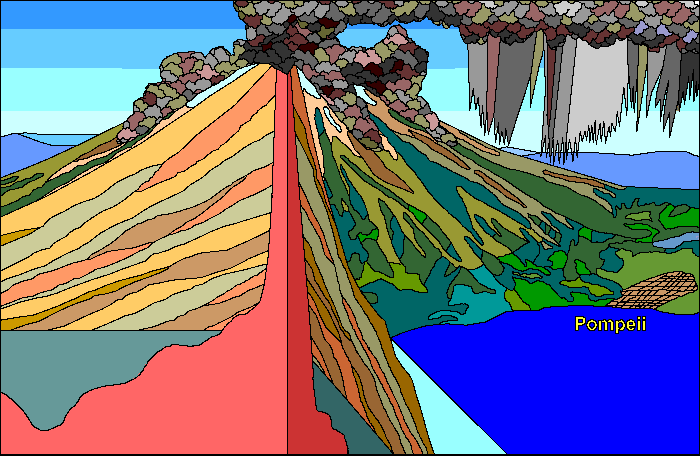Mount Vesuvius and Pompeii: The Eruption Begins
Steven Dutch, Professor Emeritus, Natural and Applied Sciences, University of Wisconsin - Green Bay
Location: 40o 49' 16" N, 014o 25' 33" W.
The tranquility of life around Vesuvius was shattered when the volcano erupted on August 24, 79 A.D.
The diagram here shows one side of the volcano cut away to reveal its inner structure. The volcano is a stratovolcano (sometimes called a composite volcano) built up by successive layers of lava, volcanic ash, and mudflows. Most people are unaware of how much of a typical volcano is made of hardened mud, formed when rain, melted snow, or condensed water vapor from eruptions mixes with ash and loose material on the sides of the volcano. Beneath the volcano is the magma chamber, a mass of molten rock. The magma reaches the surface through a narrow vent or conduit. Between eruptions, the magma in the vent hardens to form a plug, which may be blasted away by the next eruption. The initial stages of the eruption blasted ash and pumice high into the air, and the winds carried it southward over Pompeii. Pompeii was deeply buried in ash. Of the 20,000 or so people who lived there, about 2,000 have been found buried in the ash.
The Roman naturalist and naval official Pliny the Elder saw the eruption from his house at Misenum on the far side of the Bay of Naples northwest of Vesuvius. He ordered ships to set out across the bay for a rescue operation. His nephew, Pliny the Younger, stayed behind. Pliny the Elder could not reach shore at Pompeii because of debris in the water (much of it was probably floating pumice) and was only able to land at Stabiae, a town south of Pompeii. Stabiae itself was deeply buried in ash and Pliny the Elder died there from ashes, fumes, and exhaustion. Pliny the Younger left us the best account of the eruption.
In recognition of the role of the two Plinies in the eruption of 79 A.D., a large volcanic eruption with a large, high eruption cloud is called a Plinian eruption.

Possible Coloring

- Mount Vesuvius and Pompeii: Before the Eruption
- Mount Vesuvius and Pompeii: The Eruption Begins
- Mount Vesuvius and Pompeii: Pyroclastic Flows
- Mount Vesuvius and Pompeii: Caldera Collapse
- Mount Vesuvius and Pompeii: After the Eruption
- Mount Vesuvius and Pompeii: Vesuvius Rebuilds
Return to Geology Coloring Book Index
Return to Professor Dutch's Home Page
Created 09 July 2009, Last Update 15 January 2020